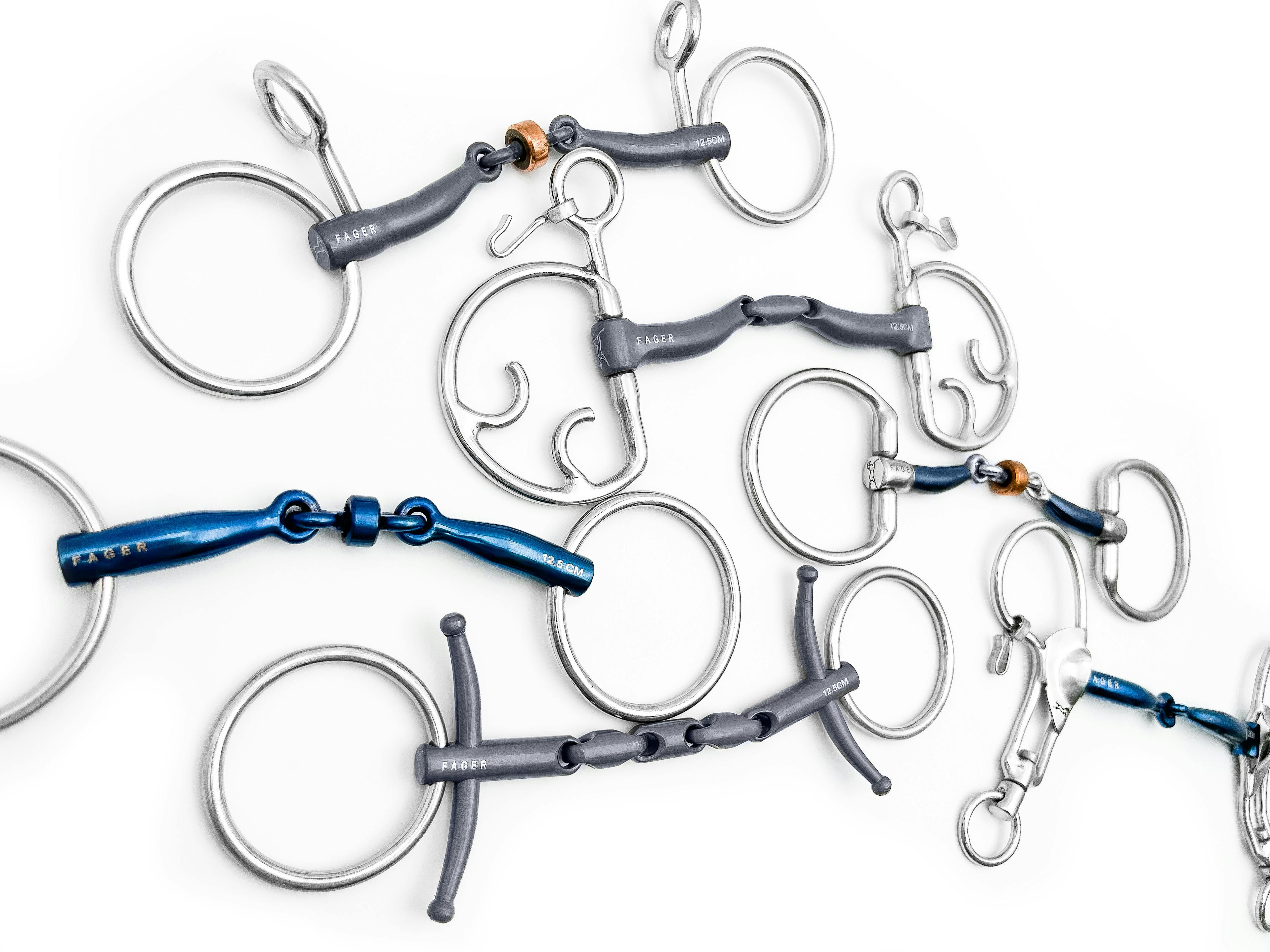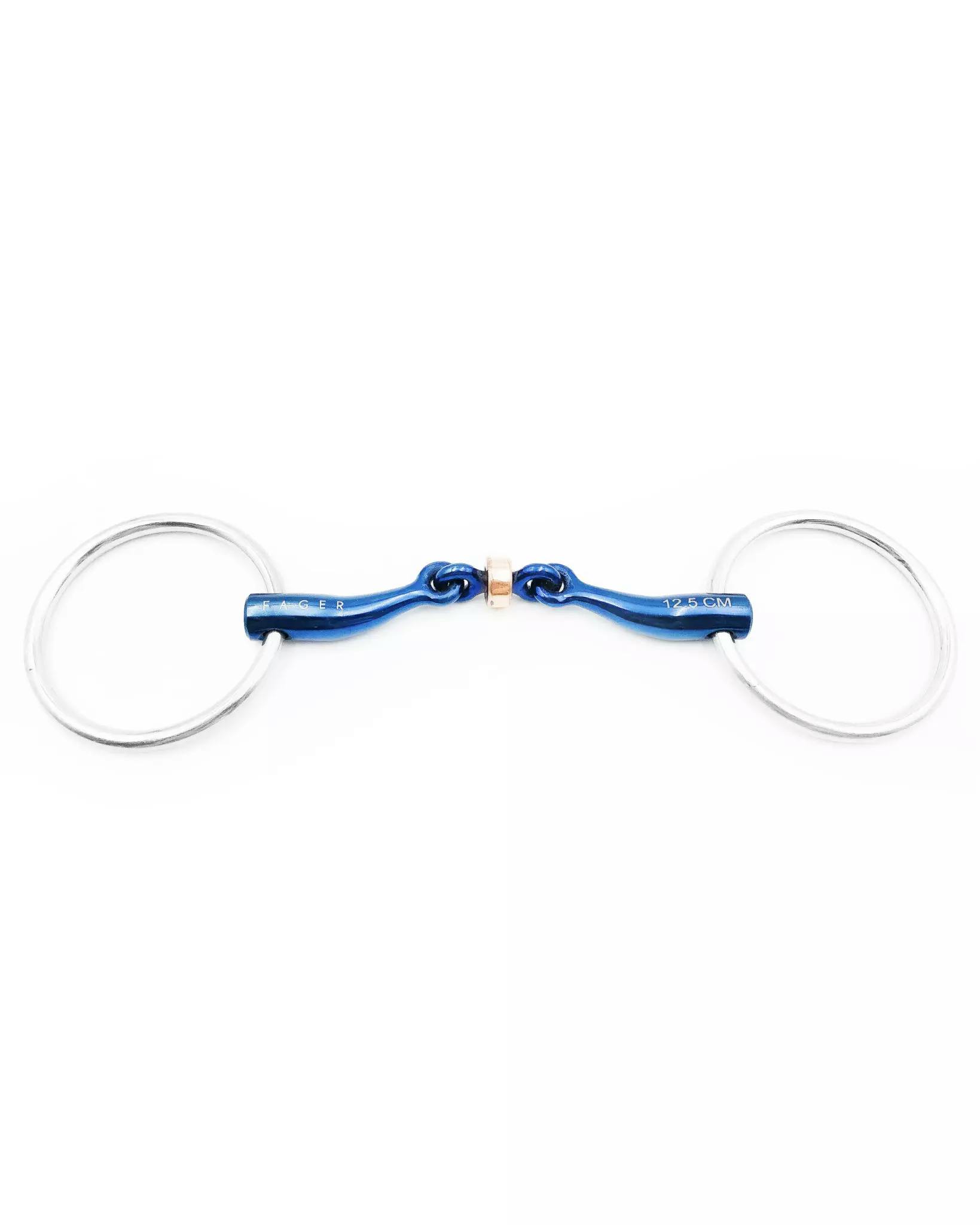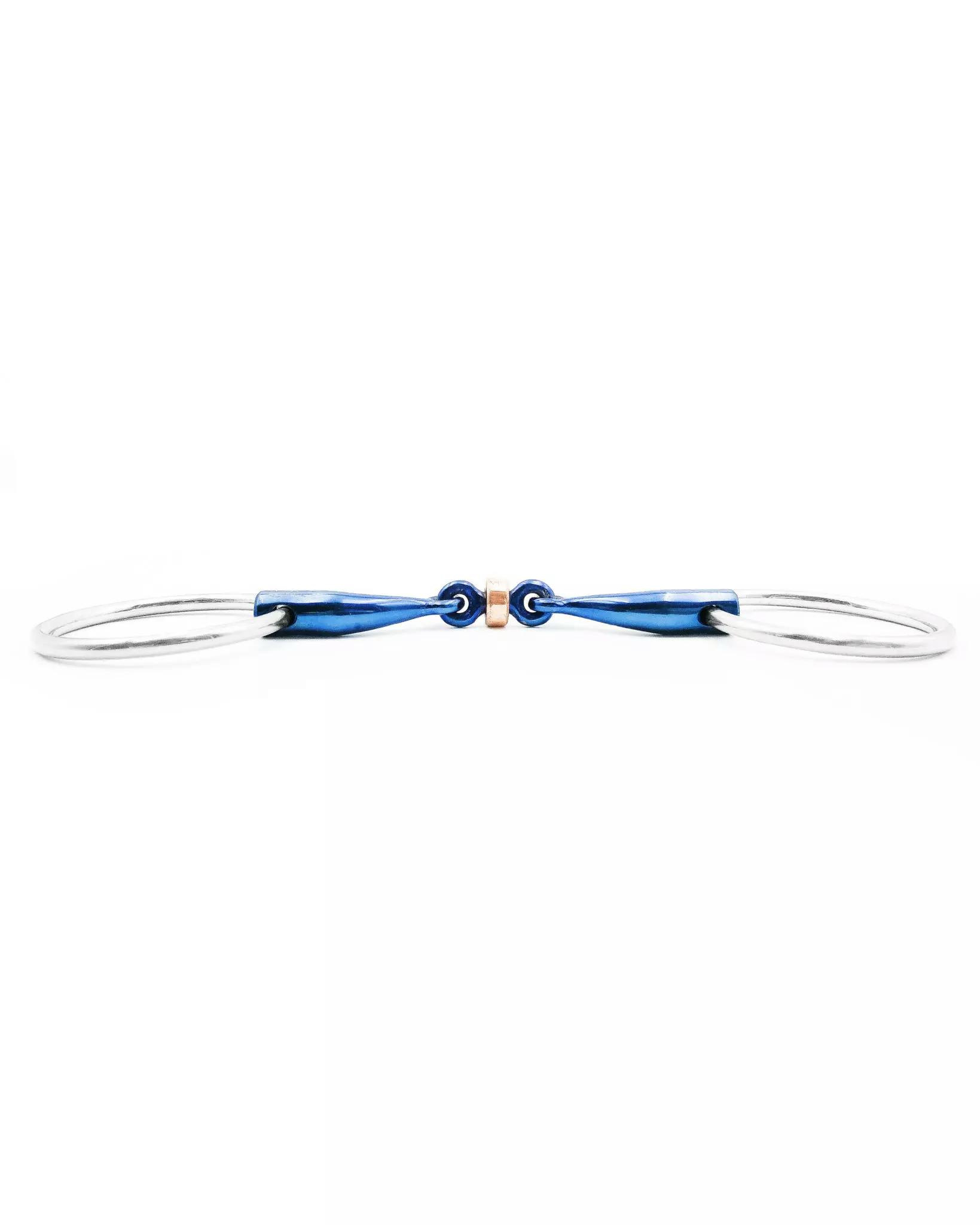
Why you should change between bits
WHY DOES FAGER RECOMMEND ALTERNATING THE BIT REGULARLY?
Here at Fager we advocate changing/alternating the bits you use for each horse on a regular basis. We strongly recommend implementing this as best practice, regardless of whether or not you have any issues with the bit you are currently using.
“If it’s not broken don’t fix/change it?” is a common saying, however in this situation we have a different view, our reasoning is as follows…
Pressure points and constant pressure
Imagine you ride in a horse in a bit regularly, so they are used to it and they work well in it. For the purpose of this example let’s say this bit is a double-jointed, 18mm mouthpiece with fixed rings.
You reach a point where you wish to improve the response from your hands to generate a lighter contact, aiming to lose that ‘fixed’ feeling. Following some research you decide upon Fager Sally Loose Rings.


On the initial test ride using Sally you are blown away! You immediately discover a noticeable improvement – Sally works exactly as you had hoped!
Now herein lies the problem – do not be tempted to then permanently change to using Sally, continuing to use for at least 5-7 days straight.
Why not? It feels amazing!
We do understand how tempting it is to do this as you are loving the results. However the horse’s mouth needs some time to become physically accustomed to this new bit and slowly adapt and accept the different feelings and pressures in the mouth.
So what exactly has changed by switching to using the Sally design?
Bear in mind that the previous bit:
Had a thicker mouthpiece, with larger joints taking up more space in the mouth.
Featured Fixed Rings which stabilized the mouthpiece much more, creating a lot of pressure on the side of the tongue, possibly even the bars, meaning your horse needed to lift it with their tongue, resulting in a stiffer connection down the reins.
The benefits of the Fager concept and design work as follows:
Sally is more lightweight, so won’t feel as heavy in the mouth.
Sally takes up less space in the mouth, allowing the horse’s tongue more freedom of movement. This can encourage some horses to mouth and play with the bit, particularly if the mouthpiece features a roller or a design featuring a moveable centrepiece which isn’t fixed.
The natural shape which Sally forms as it lies across the tongue automatically reduces any restriction of its movement, eliminating the need to lift the tongue for some pressure relief. This is especially relevant if the horse has a large tongue, as this will naturally release any tongue pressure, creating a more comfortable fit for the horse.
It is important to remember that you can never completely remove or take away the pressure, however you can adjust whereabouts in the mouth the pressure is applied and the force in which it is applied – either increasing or reducing it in specific areas.
One of the great advantages of Titanium in comparison to other metals is the sheer lightness of the material itself. This means that whenever constant pressure is applied it will automatically be less than with a thicker, heavier bit. Even using the exact same design but choosing Titanium as the material rather than Stainless Steel, will create a much lighter, more comfortable feeling for your horse.
This is a relatively simple concept; it’s not rocket science.
In addition to the lighter material, any alteration to the design/shape can alter/vary the different pressure points; dependent upon the placement where the individual horse responds best. This is where Fager designs come into their own; it is what we do and what makes our bits the best on the market.
In this scenario we released the tongue, moving the pressure onto the bars instead. We also chose a thinner mouthpiece to create more movement over the bars. The loose rings enable the horse to move the bit up and down, allowing them the choice of whether to place the bit higher or lower in the mouth, which isn’t possible with fixed rings.
If the horse is playful, we would recommend the fixed rings/Baby Fulmer/Loose Baucher over Loose Rings, as sometimes the Loose Rings can simply prove too much to play with.
All the changes above will place new and varied pressure in areas where the horse is not used to feeling it. Other factors which can potentially affect the acceptance are listed below:
The softness (or not) of the rider’s hands.
Use of the bit – how often it is used.
Mouth conformation:
The angle of the bars,
The size/thickness of the tongue,
The shape of the palate,
The difference in level between the bars and the tongue,
Thickness of the cheek lining and lip flesh.
Sensitivity at the mouth corners.
To maintain and nurture that amazing feeling you had when you first used the new bit, don’t change over to that bit permanently from the offset: Allow the horse some time to adjust to the feeling of these new pressure points. If you don’t allow time to adjust and go straight into using the new bit full time, you run the risk of creating bruises on these new pressure points, upsetting the horse who may then associate the new bit with pain and become afraid of the pressure. This potentially runs the risk of undesirable behaviour, resulting in you blaming the bit and deciding not to use it again, when this isn’t really the case.
This is the reasoning behind why we recommend you alternate the bits regularly. When using a new bit which is either constructed in a new material, features different side rings or a new design, we advise you to change to a different bit after 3 rides. (This advice is dependent upon how often you ride and the length of the ride each time).
We suggest continuing this introductory cycle for approximately 2-3 months. It is difficult to specify a generic timescale, as each horse will respond differently therefore 2-3 months should be sufficient, depending upon your own assessment of the situation.
Always remember – fitting a bit is not like fitting a shoe – a bit requires movement on different levels to be both effective for the rider and comfortable for the horse.

Always listen to the horse:
Individual horses express discomfort in varying degrees. Some will react instantly if something is not right or uncomfortable for them, whilst others are more stoic and will accept it for longer before showing any outward negative reactions.
This is so important to bear in mind – as with people, each horse is an individual.
Trust Fager
Our specialism and attention to detail always places the horse’s wellbeing at the forefront of our design and is what makes our bits truly unique in the equestrian marketplace today.
REGISTER TO RECEIVE OUR NEWSLETTER
Be the first to take part of news and offers
CUSTOMER SUPPORT
ABOUT US
